Best fast-growing plants: 10 speedy growers for your yard
Add the best fast-growing plants to your plot and enjoy impressive foliage, structure and color in double quick time


Fast-growing plants that race to maturity in no time at all are more tempting than most. After all, who wouldn’t want a beautiful mature plant to admire – reaching its perfect peak in double quick time?
So here I recommend the fastest-growing plants for wherever you live across the country. These are varieties that are naturally fast growing, but you can also speed them up by preparing thoroughly before planting, and amending the soil with garden compost or soil improver. It also pays to water them in well and to keep their roots moist until they settle in and romp away.
The other side of the coin, though, is that just like fast-growing trees, they may outgrow their space more quickly than other plants. They may not stop growing, may not even slow down when they reach the size you need and they may smother less vigorous neighbors.
The National Garden Bureau has some wise advice that’s especially important: 'Unlike furniture, plants don’t stay the same size after you place them. They keep growing until they die… some way faster and bigger than you expect.' The lesson: pay attention to the heights and widths on plant labels and space at least that much.
The key is the old motto: 'Right plant, right place'. Think first, before you choose a rapid grower, and think ahead to when it matures. And do not forget to buy some pruners.
Create instant impact with these 10 fast-growing plants
If you want to create super-quick impact in your yard, our list of the top fast-growing plants has plenty of options. I have not always chosen the absolute fastest ever in each group, because sometimes other features come into play including prolific flowering, winter tolerance, natural elegance and more.
And please be aware that although the whole point of fast-growing plants is that they grow to a good size quickly, it pays to consider their impact on other plants nearby – and even plants in your neighbors’ yards as well as your own. The worst thing that can happen after you have planted something is that you realize that it is in the wrong place.
1. Hybrid or Carolina Poplar (Populus x canadensis)

- Hardiness: USDA Z4-9 (UK H7)
- Rate of growth: 20-40in (50cm-1m) per year
- Height after ten years: 40-55ft (12-16m)
This deciduous tree quickly matures into a rather slender, upright specimen with a vertical trunk extending to the top of the tree and silvery foliage, often tinted coppery as it opens.
It's an adaptable tree that is less troubled by disease than other poplars, although some varieties produce a great deal of irritating woolly fluff so look for those noted as 'cottonless cottonwood'.
2. Leyland cypress (xCuprocyparis leylandii)
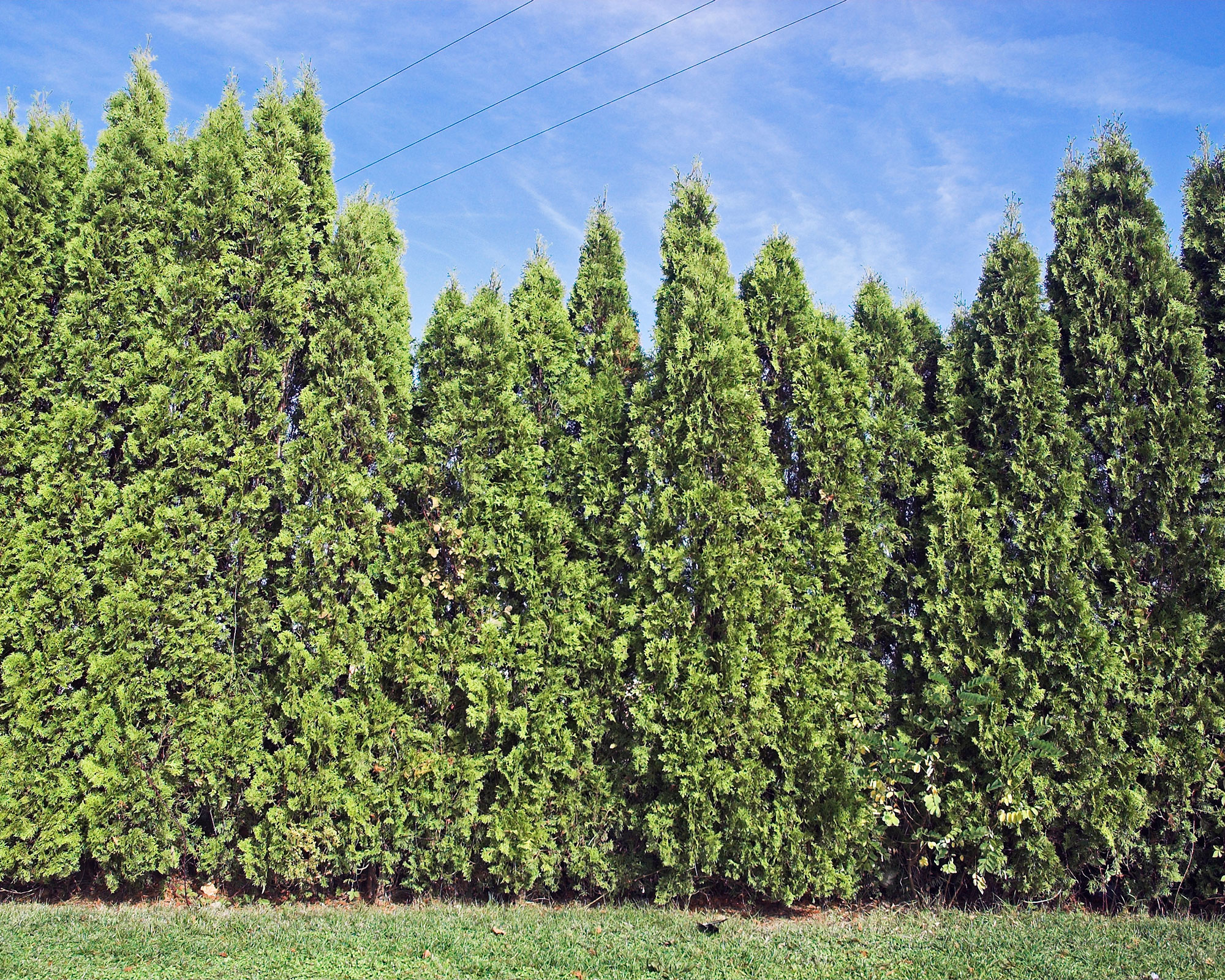
- Hardiness: USDA Z6-10 (UK H6)
- Rate of growth: 3-4ft (0.9-1.2m) per year
- Height after ten years: 25-35ft (7.5-10m)
This super-fast evergreen tree quickly develops a close tower of foliage. An excellent tall screen, and impressive as a specimen, it can grow 4ft (1.2m) a year even on poor soil.
This conifer grows strongly in most soil types and situations. Our top tip? Do not attempt to prune more extensively than a light clipping as old branches will not produce new growth.
3. Dark-leaved Elder (Sambucus Black Beauty (‘Gerda’))

- Hardiness: USDA Z4-10 (UK H6)
- Rate of growth: 1-2ft (30-60cm) per year
- Height after ten years: 12-15ft (3.5-4.5m)
If you're searching for a fast growing, low maintenance shrub, add this attractive option to your planting list.
This dramatic deciduous shrub has bold, almost black foliage and broad, flat heads of tiny, fragrant pink flowers followed by a generous crop of black berries. It's also good for making cordial or 'champagne'.
It will grow strongly at first in most soils and sunny situations, but then conveniently slows down and spreads to make an impressive specimen.
4. Photinia ‘Red Robin’

- Hardiness: USDA Z7-9 (UK H5)
- Rate of growth: 2-3ft (60-90cm) per year
- Height after ten years: 14-16ft (4-5m)
New growth of this spectacular foliage shrub opens in brilliant red, the large leaves lighting up the garden from far and wide as the leaves unfurl through the season before turning glossy green. There are also spring clusters of white flowers.
Plant in full sun or a little shade and in any reasonable soil that is not waterlogged. This evergreen shrub makes a fine informal hedge, or alternatively use it as one of the best plants for fence lines.
5. 'Kiftsgate’ rambling rose (Rosa ‘Kiftsgate’)
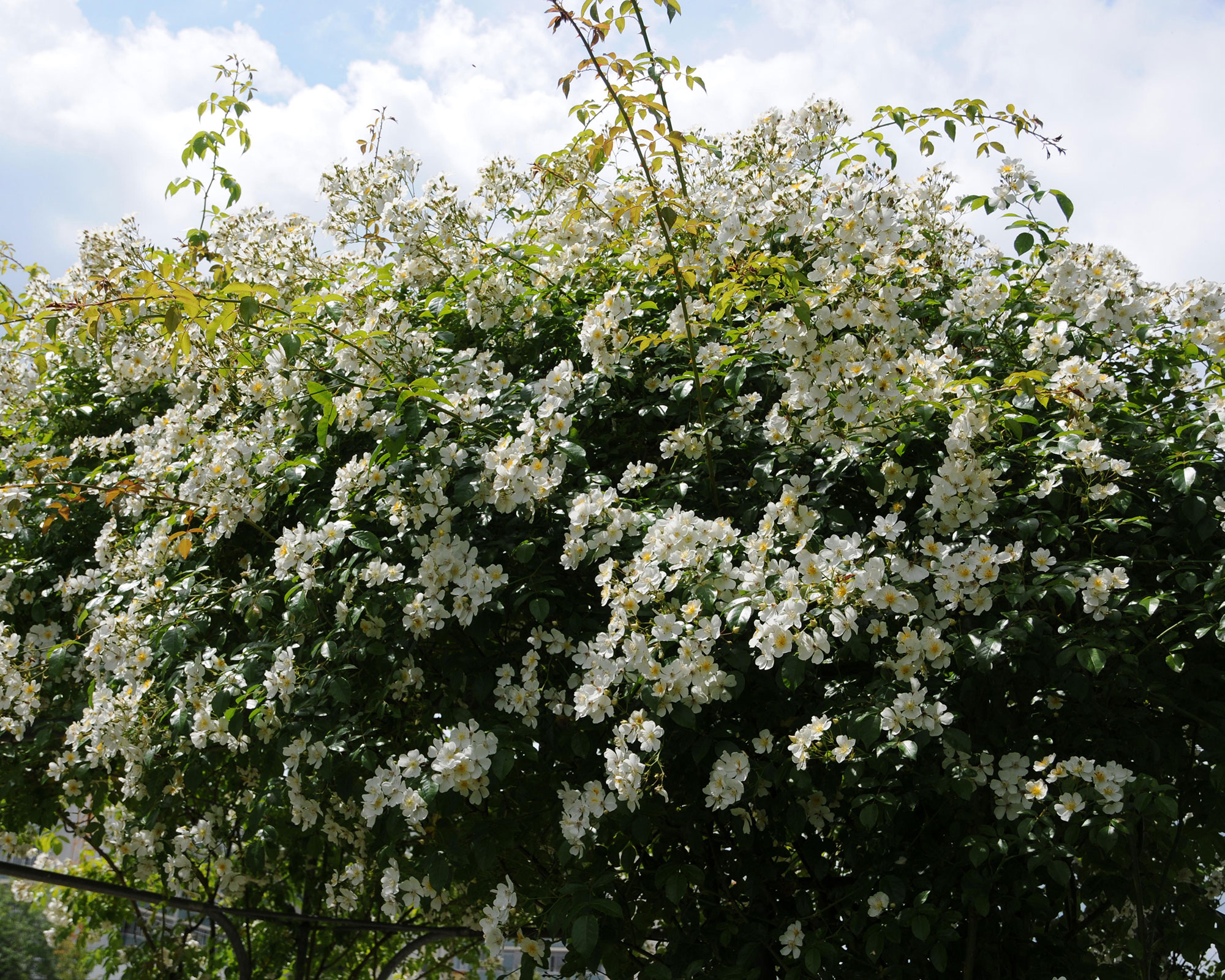
- Hardiness: USDA Z5-11 (UK H6)
- Rate of growth: 8-12ft (2.5-3.5m) per year
- Height after ten years: 25-35ft (7.5-10m)
A spectacular rambling rose variety with heads of up to a hundred small, white, sweetly scented flowers followed by small red hips that are almost as colorful and much loved by birds.
Do bear in mind that this type of rose will require a great deal of space and stout, well-established trees as support – and beware of the thorns.
6. Armand clematis (Clematis armandii)
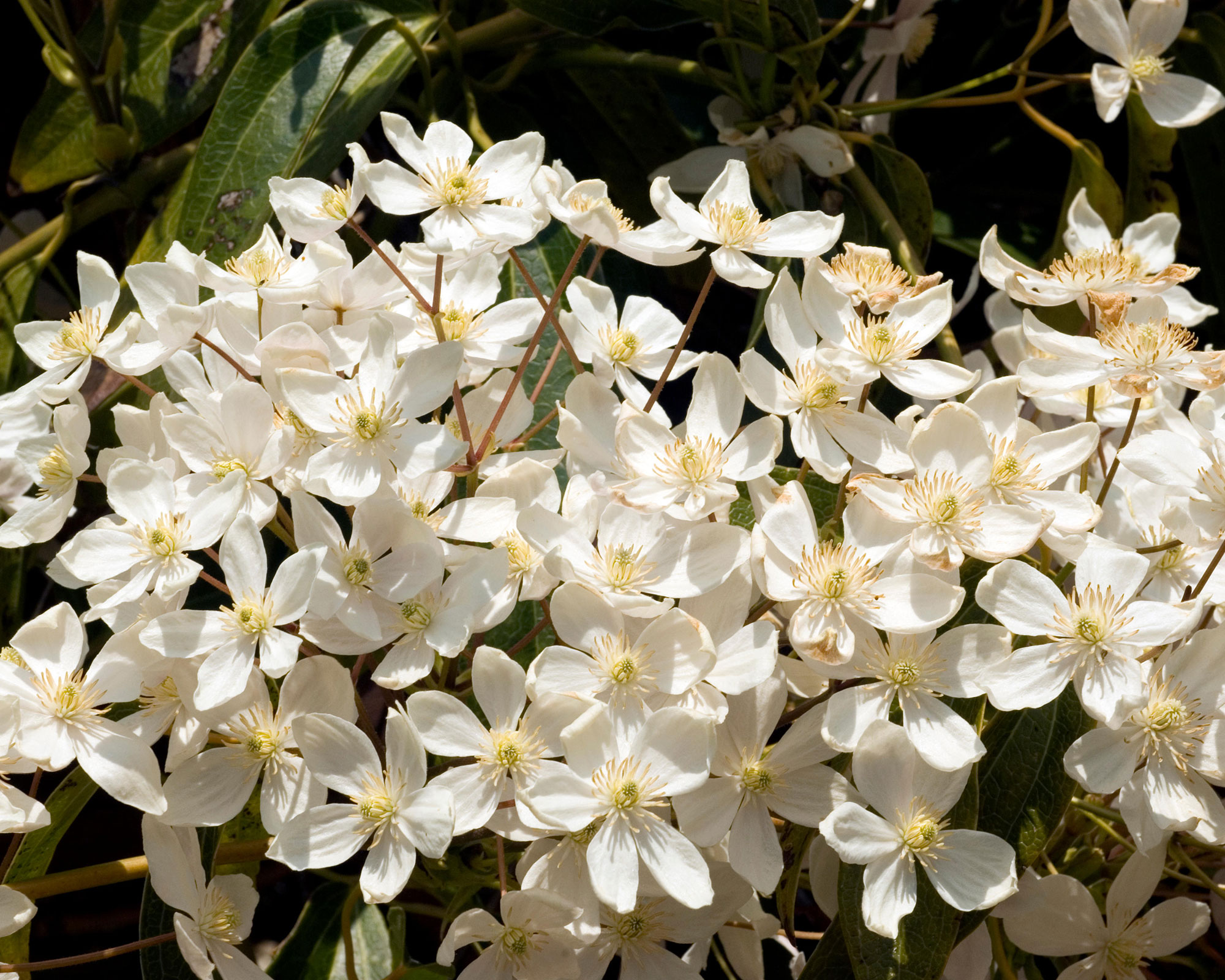
- Hardiness: USDA Z4-10 (UK H4)
- Rate of growth: 2-3ft (60-90cm) per year
- Height after ten years: 20-30ft (6-9m)
Some of the best climbing plants can be fast growing, and this stunning clematis is a case in point. It combines bold and glossy foliage made up of three 4-6in (10-12cm) leaflets with large clusters of starry white 2-3in (5-7.5cm) flowers that blush slightly as they flowers mature.
This is an adaptable clematis, though it hates waterlogging, and once set off up its host is best left unpruned to develop its superb spring display.
7. ‘Green Giant’ Arborvitae (Thuja ‘Green Giant’)
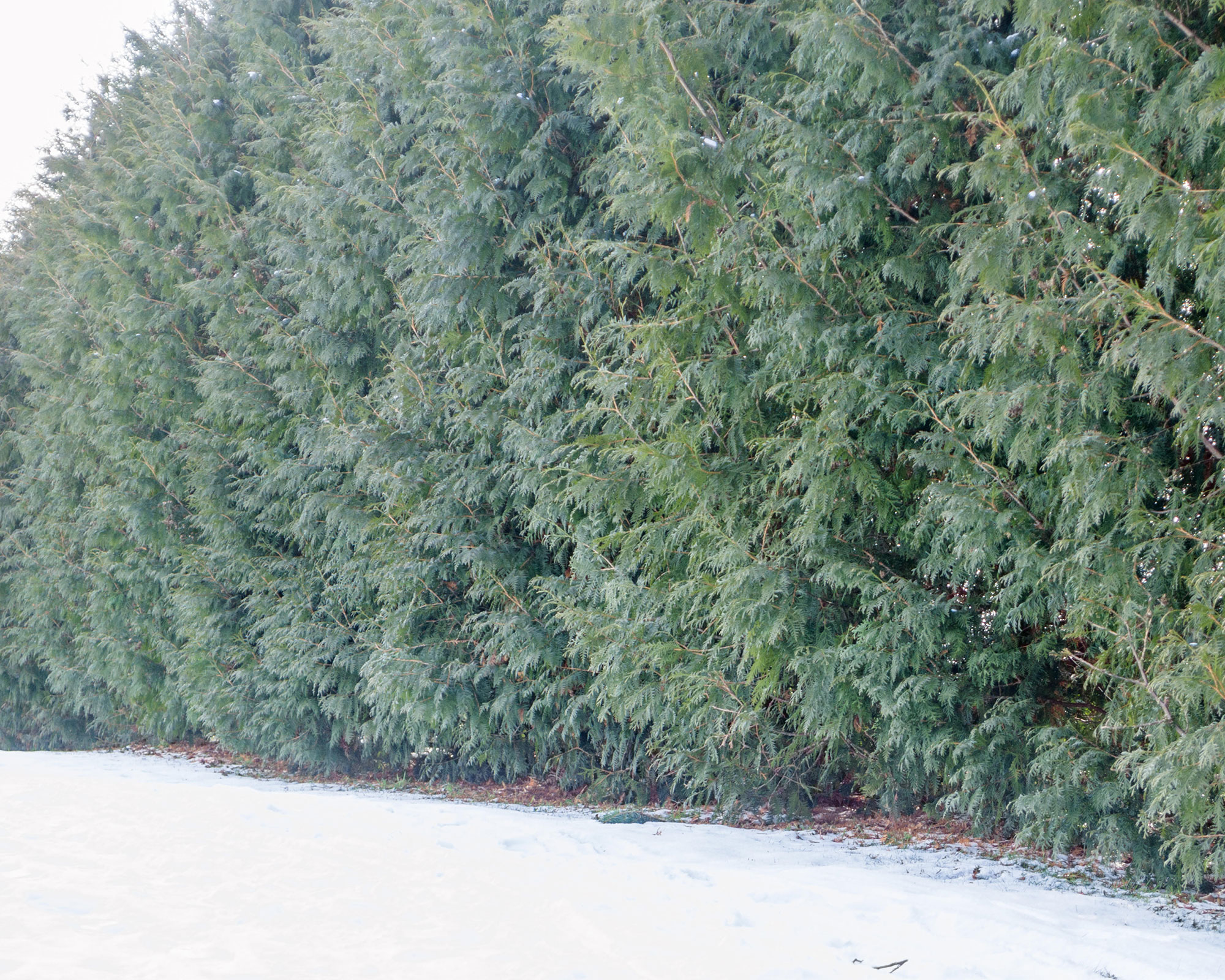
- Hardiness: USDA Z4-10 (UK H7)
- Rate of growth: 3-5ft (90cm-1.5m) per year
- Height after ten years: 18-20ft (5.5-6m)
When it comes to fast growing hedges, this dense, elegantly upright conifer is hard to beat if you're looking for garden screening ideas to shield your plot from view quickly. In winter, it takes on slightly bronze tints for added interest. A fine tall hedge or screen without the problems of keeping Leyland cypress neat and dense.
It adapts to drought, cold, wind and is rarely troubled by pests and diseases, plus its branches are strong enough to take the weight of winter snow.
8. ‘Pink Panda’ strawberry (Fragaria ‘Pink Panda’)

- Hardiness: USDA Z4-8 (UK H7)
- Rate of growth: 2-3ft (60-90cm) spread per year.
- Spread after ten years: far and wide!
This super speedy ground cover plant rushes out rapidly growing runners in all directions, branching into more growth at every leaf joint and quickly covering the ground with leaves just like edible strawberries. Clusters of rosy pink open from spring to fall, but few fruits
It will grow best in dappled shade and around evergreen shrubs in any fertile well-drained soil.
9. Easy Wave petunia (Petunia Easy Wave Series)
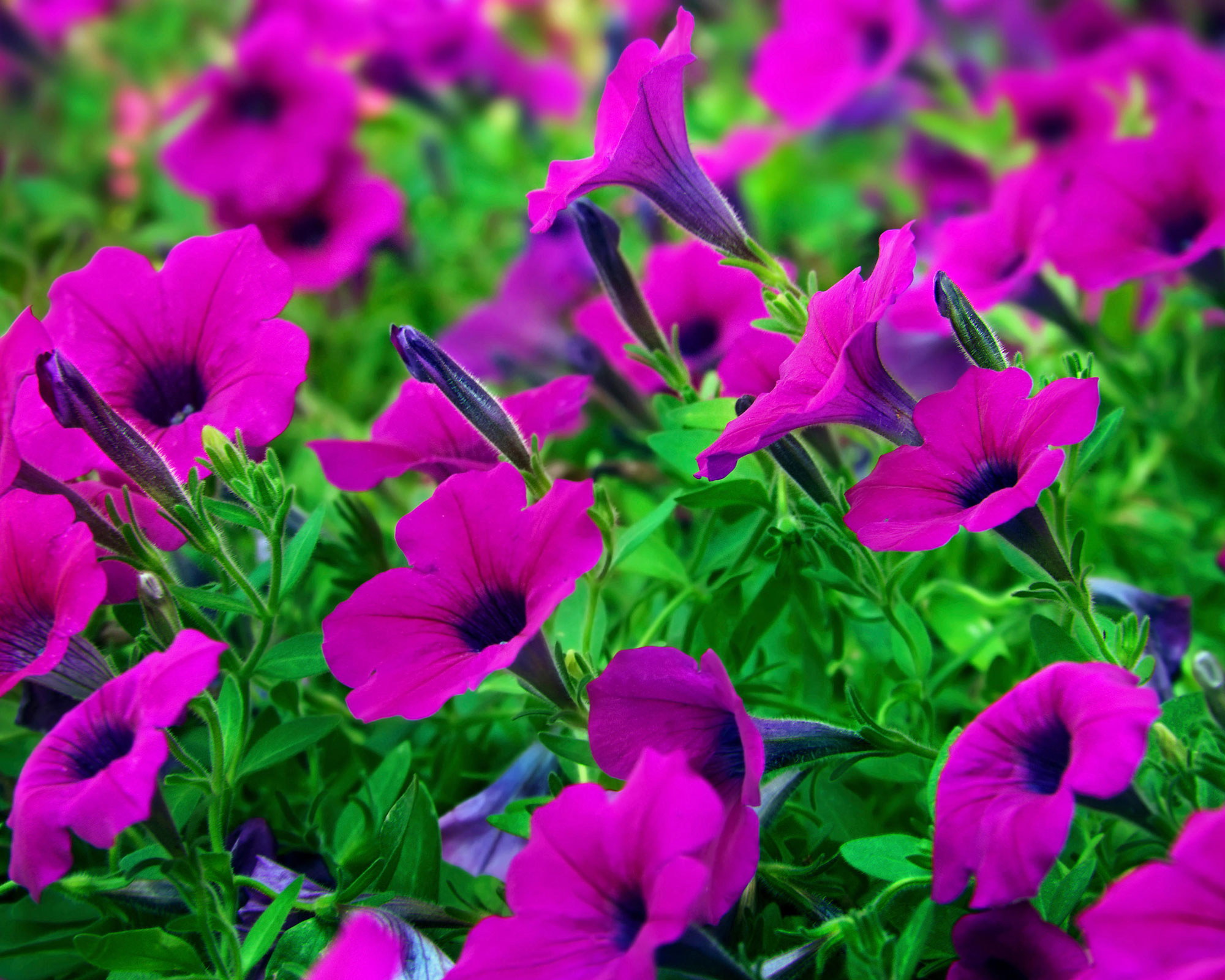
- Hardiness: USDA Z10-11 (UK H2)
- Rate of growth: 3-4ft (0.9-1.2m) per year
- Spread after one summer: 3-4ft (0.9-1.2m)
This fast-growing temp-perennial (half hardy perennial in the UK) is ideal for spectacular summer ground cover, in six colors. It's best known as a basket plant but as ground cover it spreads quickly and its trumpet-shaped blooms face upwards continuously all summer.
Happy in any reasonable, well-drained soil, but fertilize plants regularly in poor soils and irrigate in the weeks after planting if conditions are dry.
10. Spanish flag (Ipomoea lobata)
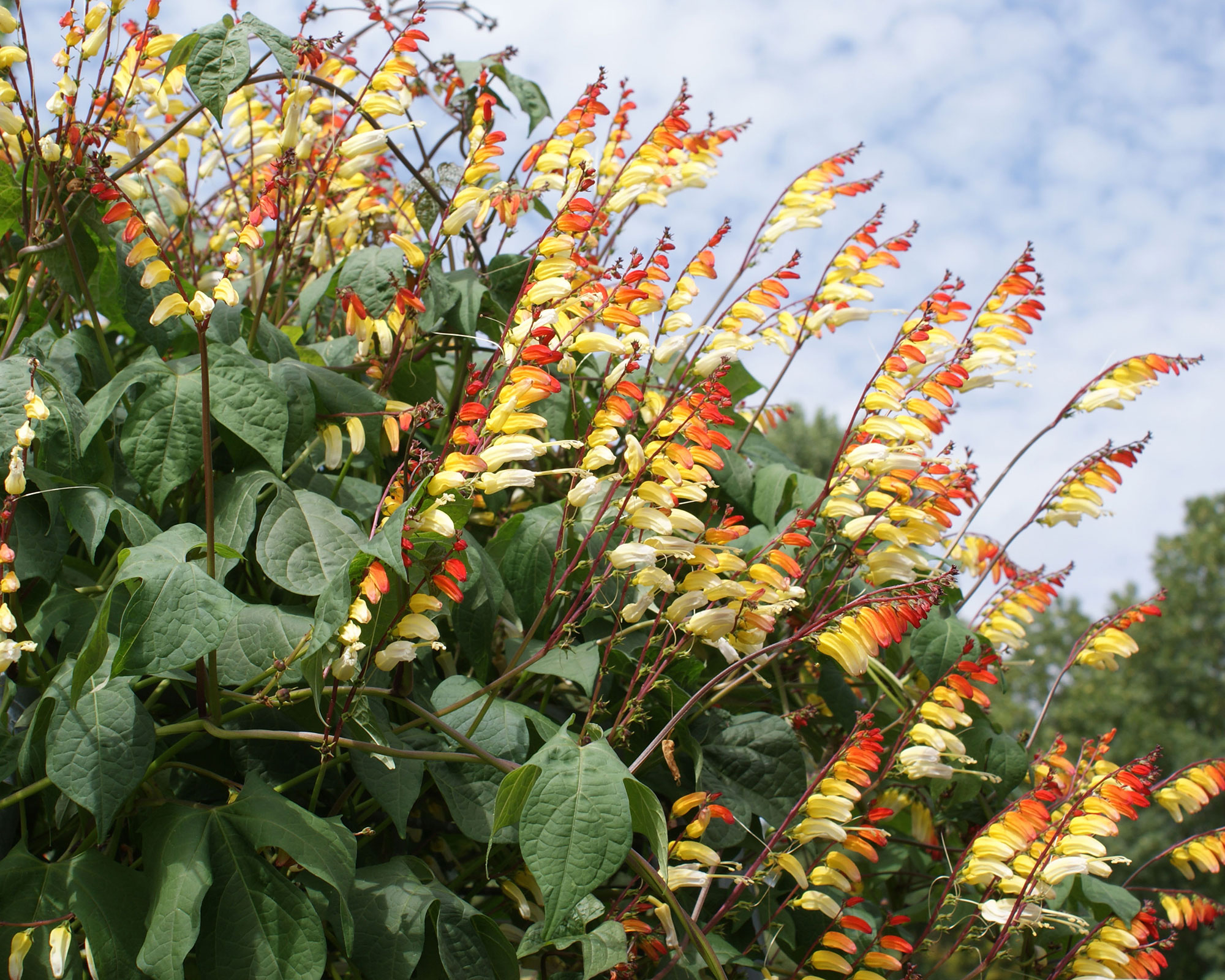
- Hardiness: USDA 4-10 (UK H1c)
- Rate of growth: 15-20ft (4.5-6.0m) per year
- Height after one summer: 15-20ft (4.5-6.0m)
If you're looking for a fast-growing annual plant, this is the one for you. This twining vine carries a dozen or more tubular flowers on each spike, changing from bright red buds to buttery yellow then cream creating a very pretty multi-colored display until the frost.
Raise from seeds sown each spring in protected conditions and plant out in late spring after the last frost.
What are the fastest-growing plants to raise from seeds?
If you want to grow fast-growing plants from seed, there are two groups, vines and garden flowers.
Vines in the morning glory family are the fastest to grow from seeds but they need cozy conditions in spring to ensure that the seeds sprout well. Look for ‘Heavenly Blue’, with exquisite sky-blue trumpets, ‘Grandpa Ott’ in rich purple and ‘Spanish Flag’ (above). They can reach 15-20ft (4.5-6.0m) in one summer.
For garden flowers sunflowers must be a top choice, ‘Giant Single’ is the most widely available tall variety and will reach 10-14ft (3-4m) while ‘Skyscraper’ is less easy to find but has larger flowers.
If you are thinking about fast growing edibles, radishes and cut-and-come again salads will be ready four weeks after sowing the seeds.

Morning glory 'Heavenly Blue'
Which are the fastest growing of all plants?
Bamboo tops the list of our fastest growing plants, sometimes growing 5ft (1.5m) in one season or even 3ft (0.9m) in 24 hours! But that doesn’t mean we should all have them in our yards – after all, it would be good to see the sky once in a while.
Different bamboos are fastest in different climates but moso bamboo (Phyllostachys edulis) can grow a yard (meter) in a day and can quickly reach 90ft (27m). The giant bamboo (Dendrocalamus giganteus) is a little slower but a little taller reaching 100ft (32m) in height, while the only one that is safe to grow in gardens is giant cane (Arundinaria gigantea), it will reach 30+ft (10+m) but spreads less than most.
What is the best fast-growing plant to grow indoors?
This depends a little on how warm you keep your home and on how regular you are with irrigation and fertilizing your indoor plants.
But the two indoor plants that most people find make the biggest impression in the shortest time are Swedish ivy (Plectranthus australis) and spider plant (Chlorophytum comosum). Both are easy to grow.
Swedish ivy is a glossy-leaved trailing plant that quickly cascades over the side of its basket to make a tumble of foliage. It roots very easily from cuttings, too.
Spider plant arches over its pots like a variegated fountain but develops its impressive effect quickly by throwing stems that develop new babies at the tips – and then the babies develop baby spider plants as well. Hanging its pot over a stairwell allows it to form a cascade of green and cream foliage.

Will fast-growing plants defeat the deer?
Yes, I’ve heard it said that fast-growing plants will defeat the deer by growing more quickly than the deer can eat them. Sadly, this is not at all true. The faster they grow, the more often the deer will arrive to eat them.
If deer are a problem in your area, it's better to consider planting some of the best deer resistant plants in your plot instead.

Graham Rice is a garden writer who has won awards for his work online, and in books and magazines, on both sides of the Atlantic. He is a member of a number of Royal Horticultural Society committees and the recipient of the 2021 Garden Media Guild Lifetime Achievement Award.
